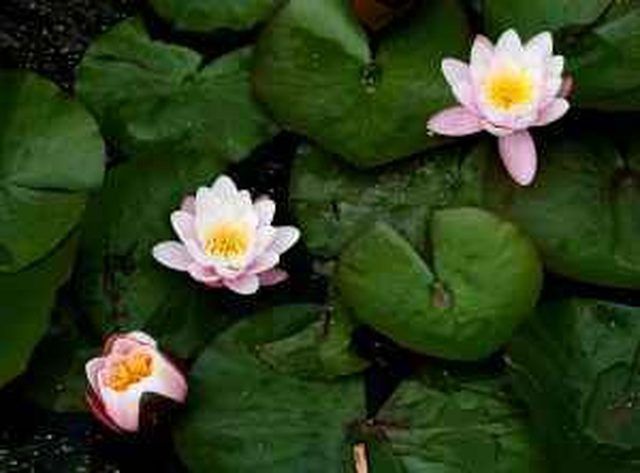Bulbs
Flower Basics
Flower Beds & Specialty Gardens
Flower Garden
Garden Furniture
Garden Gnomes
Garden Seeds
Garden Sheds
Garden Statues
Garden Tools & Supplies
Gardening Basics
Green & Organic
Groundcovers & Vines
Growing Annuals
Growing Basil
Growing Beans
Growing Berries
Growing Blueberries
Growing Cactus
Growing Corn
Growing Cotton
Growing Edibles
Growing Flowers
Growing Garlic
Growing Grapes
Growing Grass
Growing Herbs
Growing Jasmine
Growing Mint
Growing Mushrooms
Orchids
Growing Peanuts
Growing Perennials
Growing Plants
Growing Rosemary
Growing Roses
Growing Strawberries
Growing Sunflowers
Growing Thyme
Growing Tomatoes
Growing Tulips
Growing Vegetables
Herb Basics
Herb Garden
Indoor Growing
Landscaping Basics
Landscaping Patios
Landscaping Plants
Landscaping Shrubs
Landscaping Trees
Landscaping Walks & Pathways
Lawn Basics
Lawn Maintenance
Lawn Mowers
Lawn Ornaments
Lawn Planting
Lawn Tools
Outdoor Growing
Overall Landscape Planning
Pests, Weeds & Problems
Plant Basics
Rock Garden
Rose Garden
Shrubs
Soil
Specialty Gardens
Trees
Vegetable Garden
Yard Maintenance
Where Does Glucose Come From in Plants?
Where Does Glucose Come From in Plants?. In a typical ecosystem, plants are the producers. Plants take energy from the sun and through a process called photosynthesis, produce food. The food is sugar or glucose. In order to produce glucose, a plant needs the raw materials in order for photosynthesis to occur: light energy from the sun, water from...

In a typical ecosystem, plants are the producers. Plants take energy from the sun and through a process called photosynthesis, produce food. The food is sugar or glucose. In order to produce glucose, a plant needs the raw materials in order for photosynthesis to occur: light energy from the sun, water from the environment and carbon dioxide from the atmosphere.
Significance
Sunlight is the catalyst for photosynthesis. The process occurs primarily in the leaves. The light energy bring about a chemical reaction between water and carbon dioxide that occurs in the chloroplasts within the leaves. Chloroplasts are mini-organs or organelles within the plant cells. The energy splits the water molecules into its two components, oxygen and hydrogen. Oxygen leaves the plant through respiration. This is the source of oxygen in our atmosphere.
Features
Photosynthesis consists of two processes, a light reaction and a dark reaction. As the names would imply, sunlight is required for the light reaction to happen. Without light, the plant is unable to produce energy in the form of adenosine triphosphate (ATP). This is the same energy chemical that we use to fuel any cell process in our bodies.
The dark reaction also occurs within the chloroplasts. This is when sugar is produced. Light isn't necessary as it is for the light reaction, but the product of it is required. ATP, another chemical called NADPH (nicotinamide adenine dinucleotide phosphate-oxidase) and carbon dioxide through a chemical process called the Calvin cycle produce glucose.
Function
Chlorophyll is responsible for channeling the energy necessary for photosynthesis. It is also responsible for the green color of plants. The green color reflects the light waves from the sun which are not absorbed by the plants. In the case of plants, chlorophyll absorbs a mixture of blue and red waves. What we see is the result of what is not absorbed by chlorophyll.
Effects
Other agents can affect photosynthesis. Water is often the limited factor. Sunlight and carbon dioxide are readily available to plants. During times of drought or dry conditions, plants must adapt to low water resources. Plants have adapted to this possible stress. The stomata or pores of the leaves are the site of respiration or the exchange of water and gases from within the plant and the atmosphere. Carbon dioxide is taken in, and oxygen is released. During stressful times, plants can close their stomata to limit water loss. They can also open them at night as is the case with desert plants.
Benefits
Using the three basic ingredients of water, sunlight, and carbon dioxide, plants are able to carry out photosynthesis. The result is glucose so that the plant can grow and perhaps provide food for wildlife and humans. Oxygen is also released into the atmosphere, making life possible. Indeed, without plants, life would cease to exist.